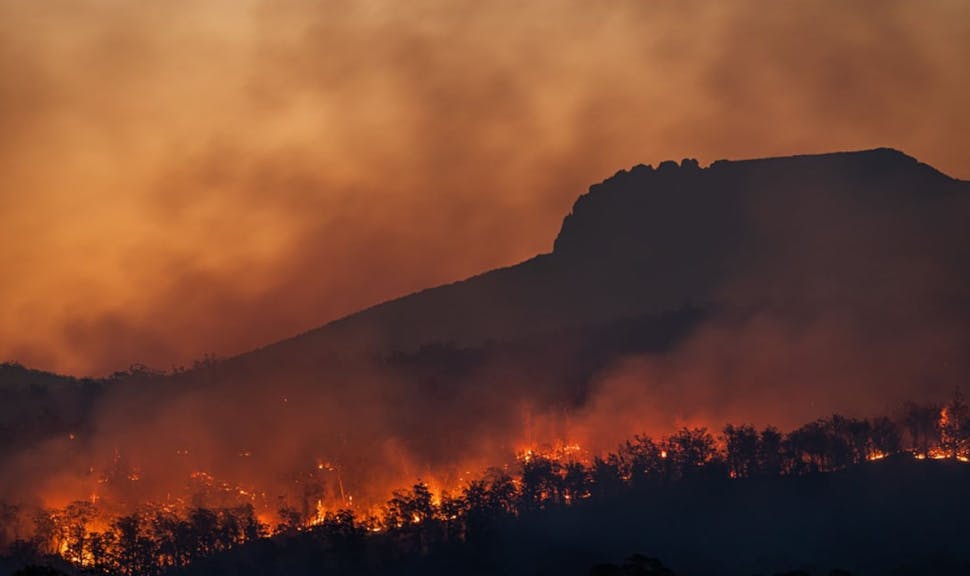

Jonathan GaleChief Underwriting Officer, Reinsurance, AXA XL
May 26, 2021
Protecting What Matters
4 minutes
Original Content : AXA XL
Almost fifty years ago, NASA released the photograph now known as the Blue Marble
. Taken by the crew of the Apollo 17 while on their journey to the Moon, it was the first photographic image showing the entirety of the planet Earth from space. The impact was profound. As one observer put it, The blue marble was an iconic image because it perfectly represented the human condition of living on an island in the universe, with all the frailty an island ecosystem is prey to
.
Uncharted waters
In the decades since the Blue Marble was taken, our understanding of the Earth's natural systems has progressed exponentially. We know significantly more about the oceans, atmosphere and cryosphere—the portions of the Earth's surface where water is in solid form and which are an integral part of the global climate system. There is also much we still don't know. The Earth, as seen from space, is not only beautiful and fragile but extremely complex.
However, one thing we do know is that the climate is changing. Among the many data points one could cite, I would note that, in March 2021, the Mauna Loa Observatory in Hawaii recorded average atmospheric CO2 levels of 417.64ppm, a level not seen for millennia. Moreover, by analysing ice core samples from Greenland and Antarctica, we also know that:
- Due to fossil fuel use and deforestation, atmospheric carbon dioxide levels are now 40 percent higher than before the industrial revolution.
- The magnitude and rate of the recent increase are almost certainly unprecedented over the last 800,000 years. (Source: British Antarctic Survey)
Humanity is truly in uncharted waters.
The effects are real but hard to pinpoint
In the commercial sphere, reinsurers were among the first to recognise the effects of a changing climate. That is not surprising since, in recent decades, losses stemming from weather-related natural catastrophes have accounted for a growing proportion of our costs. For instance, from 1950 to 1990, annual insured losses from weather-related disasters, i.e., excluding earthquakes/tsunamis, rarely exceeded USD five billion. However, since 1990, these weather-related losses have increased dramatically. In fact, in the past ten years, there has been only one year, 2015, in which insured losses from weather-related events were less than USD 50 billion. In 2017, the current record-setter, such losses amounted to a whopping USD 134 billion. (Source: Aon Benfield).
Nevertheless, while the trend is clear, a changing climate is only part of the story. So far, economic and population growth combined with urbanisation have been the primary drivers of these increased costs. Also, although we can already observe the effects of a changing climate in terms of, e.g., warmer average temperatures, rising sea levels and more severe droughts and rainfall events, the relationship between these and other factors and a particular weather event remains tenuous. Still, no one expects weather-related losses to revert to pre-1990 levels.
Getting families and societies back on their feet quickly and in a better state is a defining role and opportunity for re/insurance.
Protecting what matters
Getting families and societies back on their feet quickly and in a better state is a defining role and opportunity for re/insurance. That is why leading re/insurers, including AXA XL, remain keenly focused on developing greater understanding about this complex, multifaceted issue while also creating robust and innovative solutions to help clients become more climate resilient. At AXA XL, our commitment to addressing climate change includes participating in diverse initiatives focused on assessing climate risk and managing the associated challenges and opportunities. Some of our most notable climate risk-related activities are featured on a new webpage, Protecting What Matters.
The webpage, which will be updated regularly as new material is developed, has three sections:
- Climate risk — articles defining the climate risk equation, the risks associated with climate change and what we are doing to better understand clients' exposure.
- Market resilience — articles about how our company and industry, through innovation and collaboration, are exploring new approaches to risk modelling and developing customized solutions to address the impact of climate change.
- Collaboration and protection — focusing on present and future climate issues, articles on how we and our industry are assisting clients in building better before and building back better after a natural disaster.
These articles underscore the range of climate change-risk initiatives in which AXA XL is involved and the breadth and depth of the experts—internal and external—focusing on different aspects of this existential issue.
The internal experts, many of whom hold advanced degrees from leading universities, include actuaries, earth scientists, statisticians, agricultural economists, and catastrophe risk modellers.
The external experts whose research is described in the various articles on the webpage include the AXA Research Chair in Coastal Resilience at the University of California Santa Cruz, a Postdoctoral Fellow and Associate Professor in the Department of Mathematics at the Université du Québec à Montréal (UQAM), and The Cambridge Centre for Risk Studies at the University of Cambridge Judge Business School.
The online resource is just one example of how we are making AXA's purpose to act for human progress by protecting what matters
a reality. I encourage readers to visit the site and to share relevant content with their colleagues.
Finally, I want to acknowledge the significant contributions of Andy MacFarlane, AXA XL's Head of Pricing & Analytics for London & Bermuda Reinsurance, who spearheaded this important initiative. Thanks also to Carol Parker Trott, AXA XL's Communications & Marketing Director for Reinsurance & Bermuda, in overseeing editorial production and to Anita Janney, Creative Director, Americas, Jeff Jones, Digital Marketing Director, and Dhisharika Sachdeva, Content Management Assistant Manager, for designing and developing the webpage.
About the author:
Jonathan Gale is AXA XL's Chief Underwriting Officer, Reinsurance. In this role, he is responsible for delivering underwriting excellence, underwriting portfolio management, customer relationship management, developing new business opportunities and further demonstrating AXA XL's thought leadership capabilities. He is particularly interested in Climate Risk, the role re/insurance plays in disaster recovery (speed and quality of recovery), the growing gap between economic loss and insured loss, and the complementary potential of private re/insurance and governments. Jonathan is based in the UK and can be contacted at jonathan.gale@axaxl.com.



